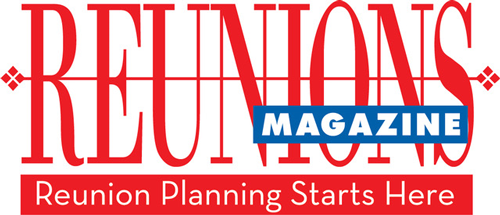by Kirsten Christensen
Nowadays, families live so far apart that it’s not always easy to maintain ties and keep up with family news. Regular newsletters strengthen bonds by connecting family members who might otherwise feel neglected. Newsletters contain interesting family information announcements such as birth, graduation and marriage, death notices, family reunion reminders, recipes, history and genealogy, or any relevant facts or ideas pertinent to the family.Who produces a family newsletter?
There must be at least one committed family member with the time and inclination to take on the task. While the responsibility may seem daunting, the rewards can be great — for both editor and family. It takes just one willing person with the time to get the ball rolling. Once interest is generated, pass it to someone else. Once a project like a newsletter takes shape it takes on a life of its own and everyone becomes interested. Members soon realize their family is more interesting than they thought.
Getting information to the rest of the family isn’t difficult. Depending on how much time and energy the editor wants to put into it, newsletters can be short and simple or elaborate. The second issue of William H. Still’s The Still Family Linkage is only four pages long. It manages to pack in information about family achievements, birth and death announcements, news about illnesses, a calendar of events, and other news items of general interest. A recent issue included notes about the discovery of an old family cemetery in New Jersey, unknown for years and since designated as historical cemetery.
The Mock Flock, produced by John and Elaine Mason for descendants of William and Sarah Blackburn Mock, is a short and informative newsletter. It includes details about the last and upcoming family reunions. Listed are family achievements; birth, death, and marriage announcements; and a few tidbits that they want to pass on to the rest of the family, including a recipe called Milton’s Camp Grub* “that’s sure to be appreciated by anyone who knows and loves Milton.”
|
While a short newsletter can contain a wealth of information, some editors prefer a longer, more elaborate style. Betty Joe Howitt has published Howitt Happenings each January for twelve years with all the news the family sends. She lists college students, weddings, new babies, genealogy information, stories by different family members, a few pictures, a page called “World Travelers,” and another called “Cousin’s Corner.” It’s a ten-page paper. Sixty-two family members subscribe (six dollars for five years) and it is, according to Howitt, “a wonderful way to keep a link between family members.”
Another very colorful (literally) example is the ten-page Wilson/Leverich Family Reunion newsletter called Cousins’ Chronicle. It is published in March, May and July and sent to 180 addresses. It’s a get-acquainted device that builds enthusiasm for reunion activities and includes stories written by various cousins: “I remember Grandma,” for instance. One of the cousins maintains the genealogy and adds marriages, new babies, deaths and family stories. Editor Phyllis Wilson Rowland, Wichita, Kansas, includes many clever graphic devices, clip art, reunion promotion and lots of cute baby pictures.
The amount of information in a newsletter ultimately determines the issue’s length. Postage costs add up quickly, so the editor should ideally be able to rely on financial help from relatives. Since things don’t always work out the way one would hope, editors must sometimes ask for donations or subscriptions. While it may seem awkward, there are graceful ways to ask for money. Jackie Utley includes a paragraph at the end of the Utley Family Update that says, “The Utley Family Update is an ongoing project with ongoing expenses. If you can make a donation of any size, it will be greatly appreciated. Any money not used for publication of the newsletter will be put toward reunion expenses. Please be a Newsletter Hero!”
Whether family members are willing to contribute or not, the majority share usually falls on the editor’s shoulders. It would be a shame for such an endeavor to fall by the wayside because of financial difficulties, and there are ways to cut costs. Since the post office has rules that must be taken into consideration, it’s helpful to develop a mockup of the intended newsletter, and let the post office determine costs so any necessary revisions can be made before the final draft. The paper can be folded and sealed with a tab, making an envelope optional–the less paper, the less postage costs. Some editors prefer to e-mail the newsletters.
No matter what size, a family newsletter is a good way to share information. If someone has only part of the family tree data, they can obtain the missing information through networking. The Lounsbury Tree by Jim Jurista is a carefully thought out, fairly elaborate publication that incorporates networking. He encourages relatives to contribute information to his newsletter by stating, The Lounsbury Tree welcomes all L-related submissions. This includes family histories, stories, birth, death and marriage announcements, reunion reports, genealogical queries and photographs.” Materials are sent by snail mail or email. Jurista then dedicates pages to the family correspondence interested in their family history and genealogy, or just general correspondence. This is an example from John V. Murphy: “[Researching] Charles LOUNSBERY and Loretta GILLETTE. Were Charles and Loretta ever divorced? Did Charles ever know he had a daughter? She was born 10 July 1921 in Buffalo, NY.” Someone in the family might have just a snippet of information to provide a clue they didn’t realize could be helpful until they read the newsletter query.
A family newsletter can be therapeutic. After September 11’s tragic events, the Utley Family Update devoted space for family members to voice sadness and concerns to people they care about. Although no family members were directly involved in the tragedy, the letters published show how deeply the events affected families across America. Utley family member Bonnie Fortner Yates wondered in her letter what kind of world her grandchildren are going to be born into, and Jackie Utley wrote, “I know that our country will pull through this and will be stronger for it, but I grieve for the loss of innocent lives and the loss of our country’s innocence.”
A newsletter can be a beneficial and welcome addition to any family. If your family already has a newsletter, please put us on your mailing list; we love to review newsletters. Send to Reunions magazine, PO Box 11727, Milwaukee WI 53211-0727 or email to [email protected].
About the author
Kirsten Christensen is a University of Wisconsin-Milwaukee graduate who served an internship with Reunions magazine.




